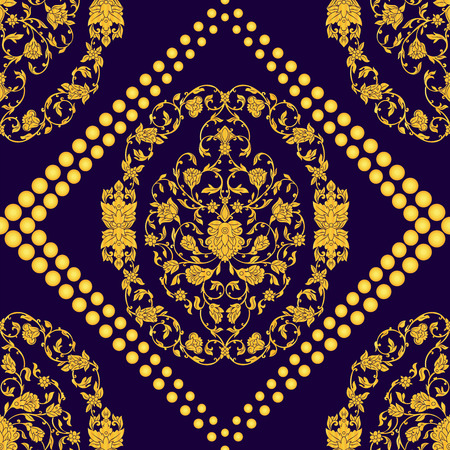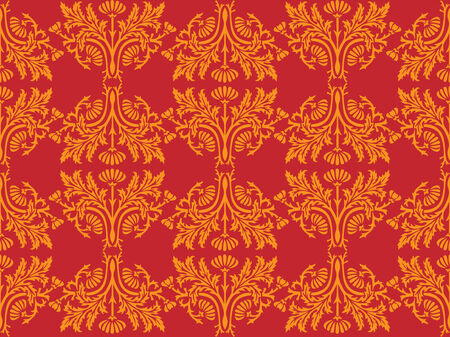Celebrating the Legacy of Indian Textiles
India’s textile heritage is a vibrant tapestry woven with centuries of tradition, artistry, and innovation. From the regal silk sarees of Kanchipuram to the earthy cottons of Khadi, Indian fabrics are a testament to skilled craftsmanship and diverse regional influences. Each weave, dye, and motif reflects the unique culture and history of its origin—be it the intricate embroidery of Lucknow’s chikankari or the colourful block prints of Rajasthan. For generations, these textiles have adorned not just people but homes across India, symbolising comfort, status, and cultural pride. Today, as global design trends embrace authenticity and storytelling, Indian textiles are making a strong comeback in home décor, offering homeowners a chance to infuse their spaces with elegance rooted in tradition. Whether draped as luxurious curtains, spread as artisanal bed covers, or crafted into contemporary cushions, Indian fabrics create interiors that celebrate both style and heritage—making every space uniquely desi yet timelessly sophisticated.
Popular Indian Fabrics for Home Interiors
Indian homes have long celebrated the richness and versatility of indigenous textiles, with certain fabrics gaining prominence for their unique charm and practicality. These materials not only reflect India’s vibrant cultural heritage but also offer exceptional suitability for home furnishings, blending aesthetics with functionality. Let us explore some of the most favoured Indian fabrics that have become staples in modern interior design.
Cotton: The Everyday Classic
Cotton is perhaps the most widely used fabric in Indian households. Renowned for its breathability, durability, and comfort, cotton suits India’s tropical climate perfectly. Its soft texture and easy maintenance make it a preferred choice for bed linens, curtains, cushion covers, and tablecloths. Moreover, cotton is available in a wide range of prints and weaves—from simple plains to intricate hand-block designs—offering flexibility for both minimalist and ornate decor styles.
Silk: Timeless Luxury
Silk has always been synonymous with opulence in Indian culture. Varanasi’s Banarasi silk and Kanchipuram silk from Tamil Nadu are especially sought-after for their lustrous sheen and delicate craftsmanship. While traditionally reserved for sarees and ceremonial wear, silk has found its place in home interiors through elegant drapes, plush cushion covers, and exquisite upholstery. The natural sheen of silk adds a touch of grandeur to spaces, making it an ideal pick for formal living areas or accent pieces.
Jute: Eco-Friendly Appeal
For those seeking sustainable options, jute is a frontrunner among Indian fabrics. Known locally as the ‘Golden Fibre,’ jute’s coarse yet appealing texture lends itself beautifully to rugs, wall hangings, table runners, and storage baskets. Its earthy tones blend seamlessly with contemporary or bohemian themes while supporting eco-conscious living—a growing trend among urban Indian consumers.
Khadi: Hand-Spun Heritage
Khadi holds a special place in India’s history as a symbol of self-reliance and craftsmanship. This hand-spun fabric boasts a rustic feel that adds authenticity and warmth to interiors. Khadi is highly absorbent and cool, making it suitable for summer bedding or lightweight curtains. Artisans often dye khadi in natural colours or embellish it with hand embroidery, creating bespoke furnishings that tell a story.
Comparison of Popular Indian Fabrics
| Fabric | Texture & Appearance | Best Uses in Interiors | Cultural Significance |
|---|---|---|---|
| Cotton | Soft, breathable, versatile prints | Bedding, curtains, cushions | Daily comfort; widely used across India |
| Silk | Smooth, lustrous, luxurious finish | Drapes, upholstery, accent cushions | Symbol of luxury; festive & traditional use |
| Jute | Rough, natural texture; earthy tones | Rugs, baskets, table runners | Eco-friendly; supports rural livelihoods |
| Khadi | Hand-spun feel; rustic look | Beddings, light curtains, artisanal decor items | Historic significance; Gandhian legacy |
The Modern Indian Aesthetic
The resurgence of traditional textiles in contemporary home interiors reflects a growing appreciation for both heritage and sustainability. By choosing indigenous fabrics like cotton, silk, jute, and khadi, homeowners infuse their spaces with authentic Indian character while enjoying practical benefits tailored to local lifestyles.

3. Traditional Techniques that Add Character
India’s rich textile heritage is celebrated worldwide for its intricate craftsmanship and time-honoured artistry. Several traditional techniques, passed down through generations, continue to infuse homes with a sense of timeless elegance and cultural pride. Let us explore some iconic Indian methods that transform fabrics into works of art, enhancing interior spaces with their unique character.
Block Printing: Stories Stamped in Colour
Originating from regions like Rajasthan and Gujarat, block printing is a centuries-old technique where artisans hand-carve wooden blocks with detailed motifs. These blocks are then dipped in natural dyes and pressed onto fabric, creating vibrant patterns that narrate stories of Indian folklore and daily life. Block-printed cushions, curtains, and table linens bring an artisanal touch and earthy charm to modern homes.
Embroidery: Threads of Tradition
Indian embroidery is as diverse as the country itself, with each region boasting its own signature style—be it the mirror work of Kutch, the elegant chikankari of Lucknow, or the zardozi gold threadwork from Delhi. Embroidered textiles add depth and opulence to interiors, making them ideal for statement pieces such as wall hangings, cushion covers, or bedspreads that reflect India’s artistic legacy.
Ikat: Weaving Magic with Resist Dyeing
The meticulous process of ikat involves tie-dyeing yarns before weaving them into fabric. This creates striking geometric or abstract designs that appear almost blurred—a hallmark of the technique. Ikat textiles from Odisha, Telangana, and Gujarat offer a sophisticated yet playful element to home décor, whether used for upholstery, drapes, or accent pieces.
Bandhani: The Art of Tie & Dye
Bandhani is synonymous with festive Indian celebrations. Practised predominantly in Gujarat and Rajasthan, this technique ties small portions of fabric before dyeing to create intricate dot patterns. The resulting cloth bursts with colour and energy, perfect for adding a lively vibe to living rooms or bedrooms through throws and pillow covers.
Infusing Cultural Flair into Modern Interiors
By incorporating these traditional crafts into home interiors, homeowners not only celebrate India’s rich cultural tapestry but also support skilled artisans who keep these legacies alive. Whether you prefer subtle sophistication or bold statements, Indian textile techniques offer endless possibilities to personalise your space with authenticity and elegance.
4. Incorporating Indian Textiles into Modern Homes
Blending the rich heritage of Indian textiles with modern home interiors is an art that celebrates both tradition and contemporary design. By thoughtfully integrating vibrant fabrics like ikat, chanderi, and khadi into everyday spaces, homeowners can achieve a look that is uniquely Indian yet globally appealing. Below are practical tips to help you seamlessly combine Indian textiles with modern décor while respecting local sensibilities.
Cushion Covers: A Splash of Colour
Swap out plain cushion covers for ones featuring traditional prints such as block-printed cotton or silk with zari borders. These instantly uplift neutral sofas and add character without overwhelming the space. Choose colours like saffron, indigo, or emerald green for a distinctly desi flair.
Drapes: Balancing Light and Luxury
Opt for lightweight muslin or sheer chanderi drapes in living rooms to allow natural light while showcasing subtle embroidery. For bedrooms, heavier fabrics like brocade or raw silk provide privacy and grandeur. Consider layering solid-coloured curtains with printed panels for a balanced Indo-modern look.
Upholstery: Statement Pieces That Endure
Reupholster accent chairs or ottomans in bold kalamkari or ikat patterns to create statement pieces. Pair these with minimalist furniture to avoid visual clutter. Durable materials like cotton-linen blends offer comfort suitable for Indias climate, making them ideal for family spaces.
Table: Blending Indian Textiles with Contemporary Styles
| Textile Element | Modern Application | Design Tip |
|---|---|---|
| Cushion Covers | Sofas, Accent Chairs | Mix solids with traditional prints for harmony |
| Drapes | Living Rooms, Bedrooms | Layer sheers with heavier fabrics for depth |
| Upholstery | Chairs, Ottomans, Benches | Use bold patterns sparingly as accents |
Respecting Local Sensibilities
In India, homes often reflect personal stories and cultural roots. When incorporating textiles, consider motifs that have regional significance—like paisleys from Kashmir or temple borders from South India. Avoid overcrowding spaces; let each textile element breathe so it can be appreciated in its full glory. The key is balance—honouring tradition while embracing the sleek lines and open layouts of contemporary design.
5. Sustainable and Ethical Practices in Indian Weaving
India’s textile heritage is not only a celebration of artistry but also an exemplar of sustainability and ethical craftsmanship. Today, eco-friendly fibres such as organic cotton, bamboo, and peace silk are increasingly used by Indian weavers, reflecting a growing consciousness towards environmental responsibility. These fibres require less water, reduce chemical usage, and leave a smaller carbon footprint—making them ideal for environmentally aware home interiors.
The Significance of Eco-Friendly Fibres
Eco-friendly textiles sourced from Indian regions like Tamil Nadu, West Bengal, and Gujarat have gained prominence in both domestic and international markets. Handloom khadi, for instance, remains a symbol of India’s sustainable legacy, while natural dyes derived from plants and minerals add unique character to each fabric without harming the ecosystem.
Fair Trade: Empowering Artisans
Fair trade practices are crucial in uplifting the lives of local artisans and weavers. When you choose fair-trade certified Indian textiles, you ensure that craftspeople receive equitable wages and work in safe conditions. This ethical approach not only improves livelihoods but also helps preserve traditional weaving techniques that have been passed down through generations.
Community Benefits & Environmental Impact
Supporting Indian artisans directly benefits rural communities by creating jobs, encouraging entrepreneurship, and sustaining indigenous skills. As demand for handcrafted, eco-conscious fabrics grows among urban Indian homeowners and NRIs alike, it paves the way for more inclusive economic growth and environmental stewardship. Investing in sustainable Indian textiles is thus an act of cultural pride, ecological responsibility, and social empowerment—enriching home interiors with authentic elegance while shaping a better future for all.
6. Where to Source Authentic Indian Fabrics
India’s rich legacy of textiles offers a vibrant palette for home interiors, but sourcing genuine fabrics requires an informed approach. Whether you are seeking handwoven silks from Varanasi or earthy cottons from Tamil Nadu, knowing where to shop makes all the difference in achieving that authentic touch.
Local Markets: The Heartbeat of Indian Textiles
Traditional bazaars and local markets are treasure troves for fabric enthusiasts. Cities like Jaipur, Kolkata, Ahmedabad, and Hyderabad are renowned for their textile markets where artisans showcase regional specialties. Bargaining is part of the experience, and engaging with local sellers often reveals stories behind each weave, adding cultural value to your selection.
Government-Backed Emporiums
State emporiums such as Central Cottage Industries Emporium and various Handloom Houses across metro cities guarantee authenticity and fair pricing. These outlets directly support weavers and offer certified products ranging from Pashmina shawls to Kalamkari prints, ensuring your purchase uplifts indigenous craftsmanship.
Renowned Online Platforms
With digital India on the rise, several online platforms now bridge artisans and buyers globally. Websites like Fabindia, Jaypore, and Okhai specialise in ethically-sourced Indian textiles. They provide detailed product information and customer reviews, making it easier to invest in quality pieces while supporting homegrown brands.
Supporting Local Artisans & Sustainable Choices
Prioritise brands that work directly with rural weaving clusters or co-operatives. Many contemporary designers collaborate with traditional craftspeople to create modern collections rooted in heritage. By choosing such labels, you contribute to preserving India’s textile legacy while embracing sustainable interior solutions.
Your Pathway to Cultural Elegance
Sourcing authentic Indian fabrics is more than a shopping expedition—it’s an immersive journey into the country’s artistic soul. Whether you stroll through lively markets or browse curated online stores, every purchase becomes a celebration of India’s timeless artistry in your home interiors.

